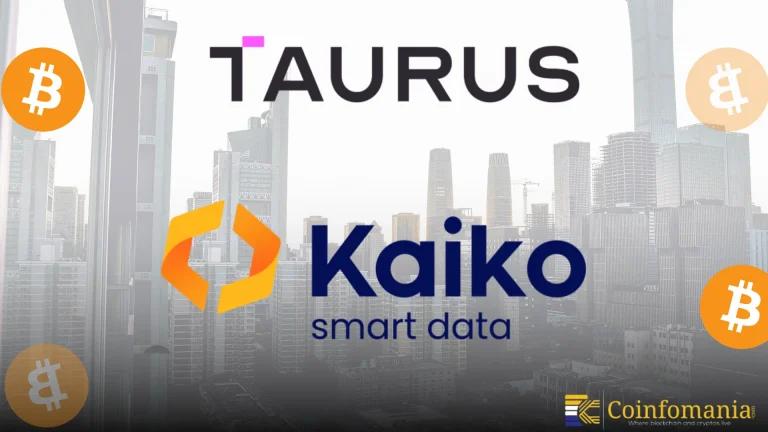TRON CEO Justin Sun Highlights Network’s Continued Rise as May Protocol Revenue Hits Record $343M Without Major Promotions
Dive into the growing role of USDT on TRON as the network reports $343 million in May revenue driven by stablecoin activity.

Quick Take
Summary is AI generated, newsroom reviewed.
TRON Network earned $343 million in May from transaction fees, setting a new monthly revenue record.
USDT on TRON drives activity, with over 2.4 million daily transfers and $23.4 billion in daily volume.
TRON holds $77.7 billion in USDT, surpassing Ethereum and indicating strong user preference for low-cost transfers.
On June 4, TRON CEO Justin Sun addressed network financial performance. He responded to a community tweet noting $343 million in revenue in May by commenting, “持续上升”, which translates to “Continued Rise.” The community member highlighted protocol income without marketing tactics or manipulated data. This figure marked a new record for the TRON Network. It underscored growth in on-chain income generated by actual usage. No promotional campaigns were reported during this period, suggesting organic usage. Publicly available data show stable daily active user and transaction counts.
TRON Network Revenue Rises Driven by Transaction Fees
The TRON Network’s revenue comes mainly from transaction fees collected by network validators. Transaction fees serve as an indicator of genuine network usage. Public records show that daily active users and transaction counts have remained stable. Ecosystem platforms like HTX and JustLend contributed significant transaction volume. These services add to overall network throughput and financial activity. Users appear to rely on these offerings for on-chain transfers. Stable ecosystem engagement supports sustained financial growth on the network. The fee-based model reflects real user activity rather than speculative token trades.
A key driver of revenue is USDT on TRON transactions and transfers. Data for 2025 shows more than 283 million USDT transfers so far. TRON processes a greater daily USDT value than competing networks like Ethereum. Ethereum’s USDT volume dropped approximately 37% from a late 2024 peak. Meanwhile, TRON reached a daily high of $23.4 billion USDT transfers. This shift shows a preference for faster, low-fee stablecoin operations globally. Users benefit from reduced costs compared to older blockchain platforms. Stablecoin dominance on the TRON network impacts financial dynamics and growth significantly.
Why TRON Has Become the Preferred Network for Stablecoin Transactions
Current data show TRON processes about 2.4 million USDT transactions daily. In comparison, Ethereum handles roughly 284,000 USDT transactions each day. Reduced fees and faster confirmations make TRON more attractive to users. Payment services favor TRON for routine transfers because of cost benefits. Retail users also choose it for cheaper, quicker token settlements. This advantage positions TRON as a viable alternative for transfers. As a result, network activity remains high and still consistent. Sustainable transaction levels contribute to predictable network operations and planning.
As of June 2025, the TRON network holds $77.7 billion in USDT. This supply surpasses competing networks in global circulating stablecoins measured. According to Token Terminal, monthly USDT on TRON transfers reach 65.6 million. The total value of these transfers is $611 billion. Many users rely on this network for cross-border payment solutions. Real-time transactions benefit from low fees and quick confirmation times. These figures highlight increasing reliance on the TRON blockchain network. Demand spikes during market volatility and geopolitical events drive transfer volume.
Stablecoin Adoption Rises Amid Push for Financial Accessibility
A previous X post from TRON CEO Justin Sun also referenced growing stablecoin trends since 2020. Usage rose during pandemic periods when demand for digital transfers increased. Ethereum remains a leader for smart contract applications, despite higher costs. Its elevated fees discourage smaller stablecoin transactions on that platform. TRON’s focus on low costs and fast transfers drew user interest. Community discussions emphasized the benefit of cheaper settlements for frequent token movements. These advantages aligned with broader shifts toward accessible financial services.
May Metrics Highlight TRON’s Stablecoin Dominance
The information shows the TRON Network’s revenue strength and stablecoin dominance. The record $343 million income in May reflects real user engagement. USDT on TRON drives much of this consistent financial activity. Adoption by global users highlights demand for efficient on-chain operations. Lower fees and speed position the network among the top stablecoin venues. Future trends will reveal if other blockchains can match this momentum. Observers can track monthly data to assess ongoing network performance. Overall, these metrics illustrate evolving digital finance infrastructure around this protocol.
In later hours of June 4, TRON CEO Justin Sun commented on the new rate of TRX’s production. Justin Sun said: “TRX减产开始,出块奖励减半了” which translates to “TRX production reduction has begun, and the block reward has been halved!”. This came in response to a community member’s X post and discussions regarding the stability of TRX production. The proposed change is cutting the block reward from 16 TRX to 8 TRX, and the voting rewards will be adjusted from 160 TRX to 128 TRX. This change is expected to reduce daily output by approximately 25%, helping balance supply and demand.
Follow us on Google News
Get the latest crypto insights and updates.
Related Posts

Aifinyo AG Steps Up Its Bitcoin Exposure With Another Strategic Buy
Vandit Grover
Author

Taurus and Kaiko Strengthen Crypto Infrastructure for Global Banks
Vandit Grover
Author

Standard Chartered Confirms Bitcoin Bottom And Expects A Strong December Rally
Vandit Grover
Author